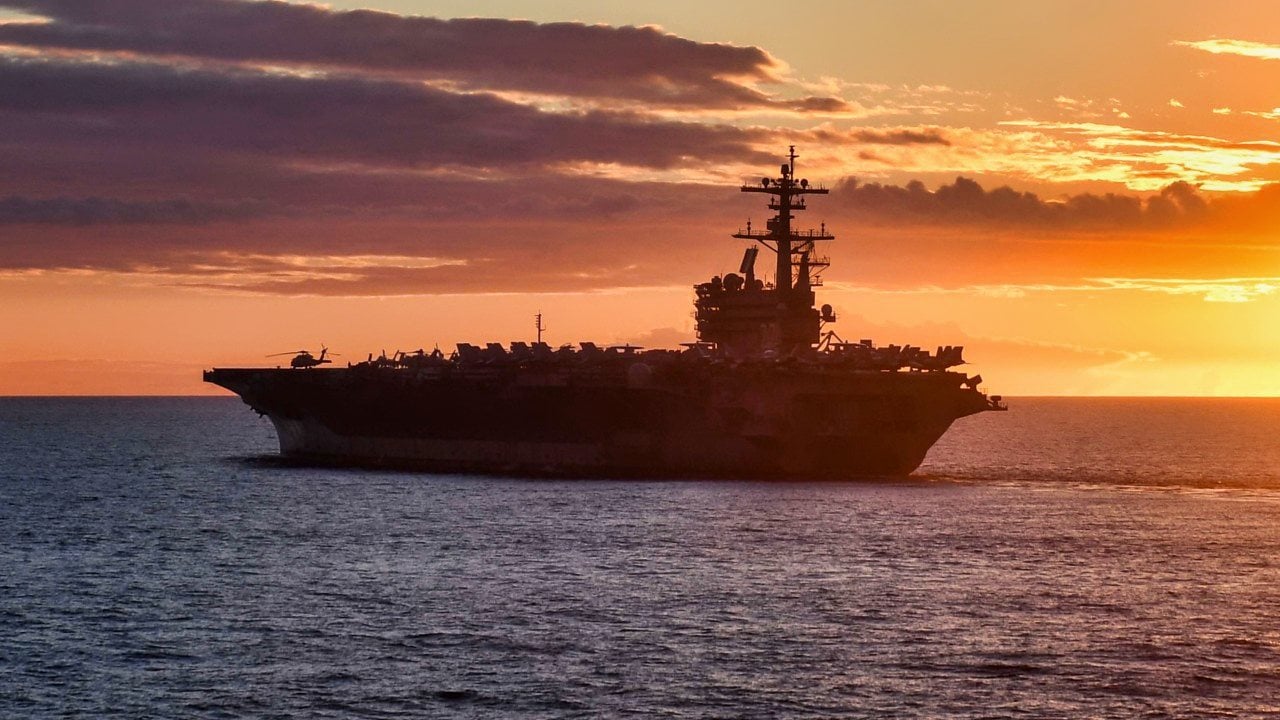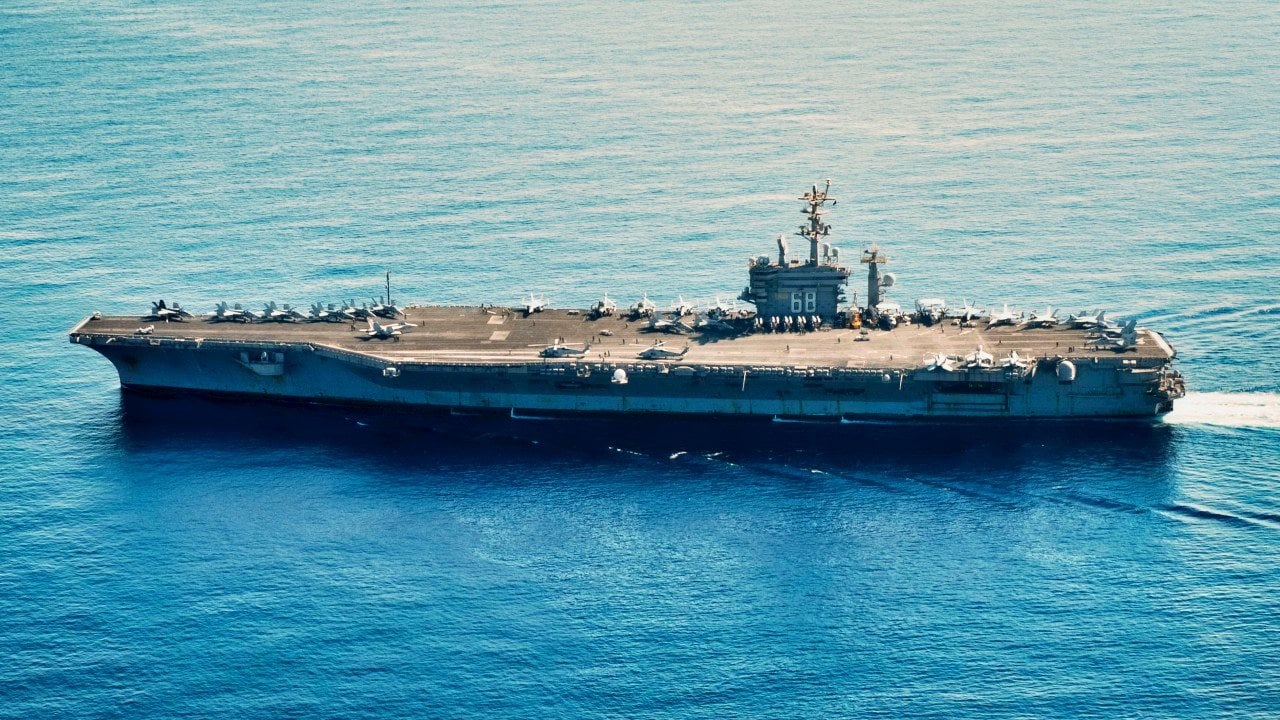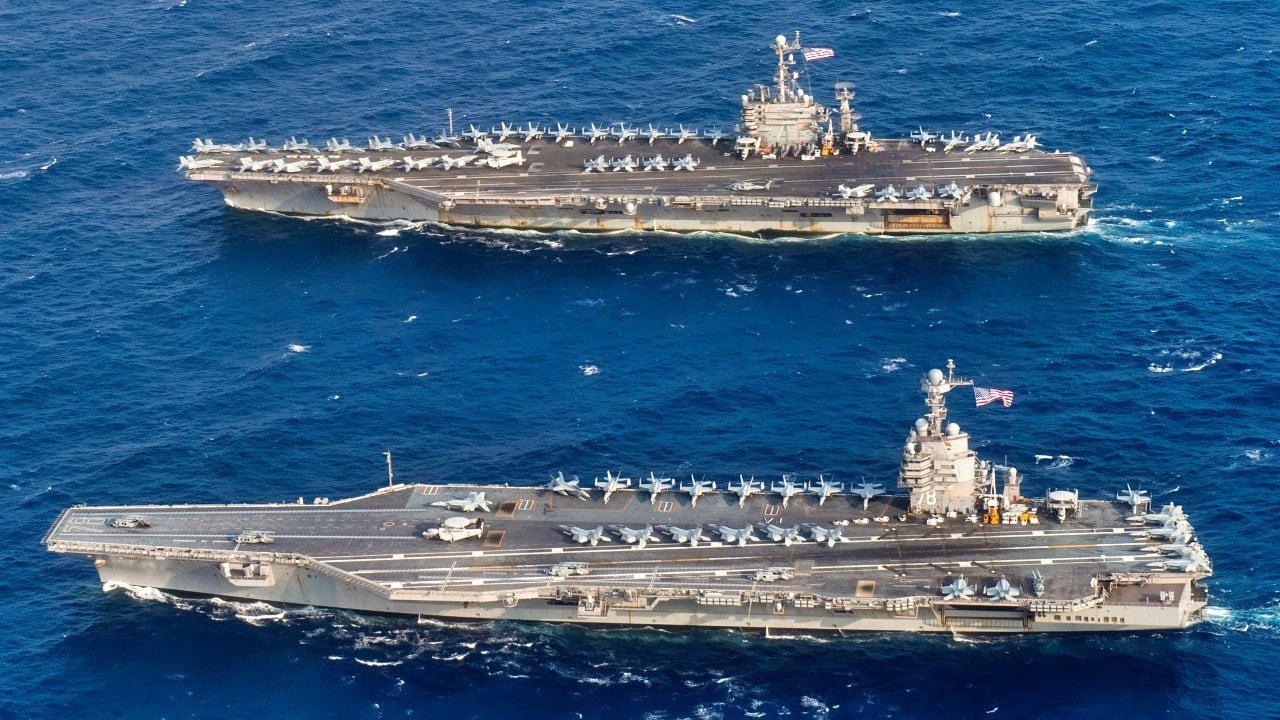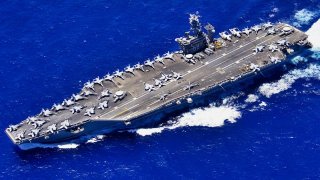The U.S. Navy Almost Retired a Nimitz-Class Aircraft Carrier Early
On average, the U.S. Navy's Nimitz-class aircraft carriers have 16 scheduled shipyard visits throughout their roughly 50-year life cycle. These include a dozen PIAs, three dry-docking planned incremental availabilities (DPIA), and one RCOH.
Summary and Key Points: The USS Harry S. Truman (CVN-75), a Nimitz-class nuclear-powered aircraft carrier, recently completed a 12-month Planned Incremental Availability (PIA) for modernization and repair. Planning has begun for its midlife Refueling and Complex Overhaul (RCOH), a critical process for extending the carrier's service life.

-Huntington Ingalls Industries has been awarded a $913 million contract for this work, which will be completed by 2026.
-The Truman, commissioned in 1998, has served in numerous combat and humanitarian missions, and its continued operation underscores its strategic importance to the U.S. Navy.
It was a few months back that the U.S. Navy's Nimitz-class nuclear-powered aircraft carrier USS Harry S. Truman (CVN-75) completed a 12-month Planned Incremental Availability (PIA), which focused on modernization efforts, structural repair, and preservation work on the warship. Yet, the planning will soon begin on the carrier's midlife overall.
Months back, Huntington Ingalls Industries (HII) announced that its Newport News Shipbuilding (NNS) division was awarded an advanced planning contract for the refueling and complex overhaul (RCOH) of CVN-75. The contract, which has a total potential value of $913 million, will include engineering, design, material procurement and fabrication, documentation, resource forecasting and pre-overhaul inspections.
"Comprehensive planning is vitally important to the overall success of an engineering and construction project of this magnitude on the aircraft carriers that serve our nation," said Rob Check, NNS vice president of in-service aircraft carrier programs. "This contract allows us to properly plan for each step in the overhaul process, from preparing for the ship's arrival at NNS to its redelivery back to the Navy, so that Harry S. Truman and its sailors can continue to protect peace and prosperity around the world."
The RCOH will represent 35% of all maintenance and modernization completed during the supercarrier's 50-year service life. CVN-75 will be the eighth Nimitz-class vessel to undergo the RCOH, and planning for it will be completed by 2026.
Keeping the Aircraft Carriers Sailing
On average, the U.S. Navy's Nimitz-class aircraft carriers have 16 scheduled shipyard visits throughout their roughly 50-year life cycle. These include a dozen PIAs, three dry-docking planned incremental availabilities (DPIA), and one RCOH.
This recent PIA on USS Harry S. Truman was directed at the significant structural repair and preservation work, including tanks, voids, weapons elevators, aviation engine hatch safety station modification and airplane crane, and combat systems' CANES upgrade that improves communication connectivity and integration of systems onboard Truman.
It almost didn't happen – as there had been calls to retire CVN-75 decades early, shrinking the carrier fleet to just ten flattops. Some supporters of the plan suggested it could save more than $30 billion over the next 25 years, but lawmakers opposed it, and the early retirement of the carrier was blocked by then-President Donald Trump.
USS Harry S. Truman: Meet the Lone Warrior
CVN-75, nicknamed HST and Lone Warrior, was the first warship to be named for the 33rd president of the United States (POTUS), Harry S. Truman. She is currently homeported at Naval Station Norfolk, Virginia. The carrier was launched on September 7, 1996, by Newport News Shipbuilding, Newport News, Virginia, and commissioned on July 25, 1998.
USS Harry S. Truman was initially the flagship of Carrier Group Two (CG-2), and later was the flagship of Carrier Strike Group 10 (CSG-10) and Carrier Strike Group 8 (CSG-8).
As with other Nimitz-class carriers, CVN-75 is powered by two A4W pressurized water nuclear reactors, which drive four propeller shafts and can produce a maximum speed of over 30 knots (56 km/h) and a maximum power of around 260,000 shaft horsepower (190 MW). The carrier has almost unlimited range as well as the ability to stay at sea almost indefinitely.
The carrier has a length of 333 meters overall, 317 meters at the waterline, and a beam of 41 meters. She has a full-load displacement of 101,196 long tons (102,820 tons), while the ship's complement includes 558 officers and 5,454 enlisted (including embarked air wing). As a floating military airport, Lone Warrior is 1,092 feet long while its flight deck is about 4.5 acres. The warship is a home at sea to approximately 3,200 sailors and Marines as well as nearly 2,500 additional personnel that make up the air wing.
The carrier's embarked air wing consists of eight to nine squadrons of fixed-wing and rotary aircraft including Navy and Marine Corps F/A-18 Hornets, EA-18G Growlers, MH-60Rs, MH-60Ss and E-2C Hawkeyes. As with other carriers in her class, CVN-75 can utilize her four catapults and four arresting gear engines to launch and recover aircraft rapidly and simultaneously.
During the early stages of the 2003 invasion of Iraq, air wing aircrews flew nearly 1,300 combat sorties from the Mediterranean Sea, while in 2004 as part of a Navy-wide series of re-designations became the immediate superior in command (ISIC) of Carrier Strike Group 10 (CSG-10) and headed to the Persian Gulf. Harry S. Truman and Carrier Air Wing 3 (CAW-3) launched 2,577 sorties, totaling nearly 13,000 flight hours, flying combat missions over Iraq. In 2016, the carrier as flagship of Carrier Strike Group 8 (CSG-8) took part in an eight-month air operation against ISIS as part of Operation Inherent Resolve.

In addition to combat operations, CVN-75 has also taken part in multiple humanitarian missions including responding to 2005's Hurricane Katrina.
She has won numerous awards that recognize the ship's excellence including the Battenberg Cup in 2003 and again in 2021 for operational excellence during its 2020 deployment to the U.S. 2nd, 5th and 6th Fleet areas of responsibility. Harry S. Truman has also earned multiple Battle "E" awards, as well as the Marjorie Sterrett Battleship Fund Award, which is given to the most battle-ready ship in the U.S. Atlantic Fleet. She won that award twice, first in 2004 and again in 2009.

Author Experience and Expertise: Peter Suciu
Peter Suciu is a Michigan-based writer. He has contributed to more than four dozen magazines, newspapers, and websites with over 3,200 published pieces over a twenty-year career in journalism. He regularly writes about military hardware, firearms history, cybersecurity, politics, and international affairs. Peter is also a Contributing Writer for Forbes and Clearance Jobs. You can follow him on Twitter: @PeterSuciu. You can email the author: [email protected].
All images are from Shutterstock.


